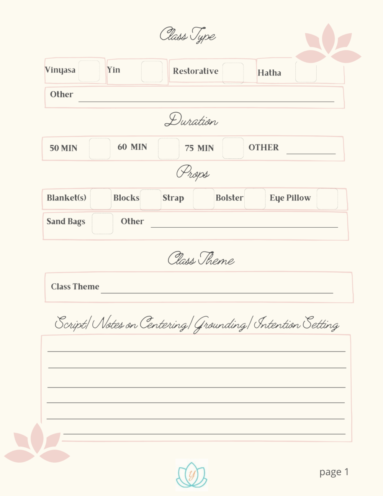As I had hoped, teaching the Niyamas (self-discipline or observances) came much more naturally to me than when I started to teach the Yamas. Once I opened my heart to what these meaningful gems meant to me, it felt completely effortless to share them with others. I’m confident it will be the same for you.
If you haven’t read Teaching the Yamas in Today’s World, please take a moment and start there. The Yamas and Niyamas are known as guidelines to live a purposeful and meaningful life. They are the first two limbs of yoga in Patanjali’s eight-limbed path.
The following is an introduction to how I presented the Niyamas to my students the first time through. As I explained in Teaching the Yamas in Today’s World, they will most likely be refined as I continue to teach them. Teaching is a practice as well. As teachers, we are always evolving, trying new things, seeing what feels authentic to us and most importantly how well the students receive the information and how it enhances their practice. Remember, it is important to give students the foundational knowledge of the 8 limbs of yoga first, before introducing the Niyamas, to put this knowledge into context.
SAUCHA
The meaning of Saucha is cleanliness or purity and is the first of the Niyamas (2nd limb; self-disciplines) in Patanjali’s 8-limbed path.
One level of Saucha refers to keeping ourselves and our surroundings clean, but we can take it further and think about keeping the inside of our sacred spaces clean.
Our minds end up full of clutter and unnecessary stuff and it’s important to take time to clear our heads. We can do this by taking time for self-care, taking a walk, practicing yoga, pranayama, and meditation.
Keeping our minds clean and free from negativity and self-destructive thoughts is very important.
We can also practice making sure our spoken words are clear and pure while communicating with others.
We can keep our physical bodies pure by eating healthy, clean foods.
Remember our asana practice offers many cleansing benefits too, bringing in fresh oxygenated blood to cleanse our lymphatic system, detox our organs, and boost our immune system.
These are just a few of the many ways to practice Saucha in our daily lives.
“Yoga is meant for the purification of the body and its exploration as well as the refinement of the mind.”
~ B.K.S. Iyengar
SANTOSHA
Santosha is a Sanskrit word meaning contentment and it’s the second of the Niyamas.
Sometimes we are striving so hard for something we want or think will make us feel happy that we lose sight of the here and now.
Not everything in life is always going to be easy, but we can be the calm at the center of the storm and be okay.
By letting go of the constant effort we can experience contentment now.
In our yoga practice we can acknowledge and be grateful for the time we have carved out to just be in the here and now. We can put forth effort during our practice, but we can also allow time to let go, to relax, release, and just be.
Let go of whatever you’ve been striving for, whatever you can let go of that won’t harm you or others, let it go. See how it feels to release that constant effort and experience Santosha, contentment, now.
In the book Light on Yoga, B.K.S. Iyengar writes, “the yogi feels the lack of nothing and so is naturally content.”
Enhance your class by sharing the following affirmations, to assist your students into deep relaxation:
- I release all effort and allow myself to be in this moment.
- I embrace who I am and I am grateful for what I have.
- Everything is as it should be in this moment.
- I trust my inner wisdom.
- Serenity and contentment are within me.
TAPAS
The teaching of this Niyama coincided with the summer solstice, and it seemed appropriate to teach them together.
Tapas means heat, fiery passion, burning desire or dedication.
During the heat of summer, nature is at its peak. It’s important to take in the fullness of nature (Prakriti) and all the abundant gifts offered to us. We should remain open to our connection to the universe knowing we are an important part of it.
Our passion and desires may also be at their peak during this time. It’s important to explore and honor our feelings and desires.
We can bring passion and dedication into our practice by bringing this vitality and energy into our breath and movement in each posture.
This practice included many Surya Namaskaras (sun salutations) and core work, igniting an inner fire. After building heat, Tapas in our bodies, students paused to reflect on how they felt, feeling the Prana (life force) course through their bodies. The practice concluded with the following guided meditation:
“As you settle in for savasana and take in the benefits of your Tapas practice today, imagine the scent of honeysuckle wafting through the summer air… with each gentle inhalation, you take in the sweet scent creating a euphoric state within you; with each exhalation you relax further into a state of calm. As evening falls, you enjoy a reprieve from the heat of the day. The sky is clear, and you feel a gentle breeze caressing your skin. As you enjoy sitting fireside looking up at the stars… you listen to the songs of the crickets and frogs. Enjoy it all; remain open to these and the abundance of gifts the universe is offering to you.”
SVADHYAYA
“Know yourself so well that you will grow into your wholeness and greatness.” ~ C. L. (The Yamas and the Niyamas, Deborah Adele)
Svadhyaya, denotes self-study and the study of the ancient sacred texts.
Sometimes we need to go off the beaten path. Take a detour, the road less traveled, or arrive on our yoga mats to make space for quiet reflection and introspection. Here we can be the observer of our thoughts, release our fears, and leave judgement and criticism behind. It is in these moments we may connect with our true inner Self. Here we can discern between the small self – the ego – and the true Self, the divine within us.
“Study thy self, discover the divine” ~ Patanjali, Yoga Sutra 2.44
ISHVARA PRANIDHANA
“Surrender is a journey from outer turmoil to inner peace.” – Sri Chinmoy
Ishvara Pranidhana, the fifth and final Niyama and perhaps the most important, means surrender. Spiritually speaking, surrendering your small self (the ego) to your higher Self.
Our minds are conditioned to always be thinking, working, trying to solve the problem and to control everything. The purpose of this (our minds think) is to keep us safe and make our lives better. Our minds will go through great lengths to make our life experiences and the experiences of those we love the way we want them to be or think they should be.
But in some situations, when all strategies have been exhausted, we arrive at surrender. Surrender itself is easy. It’s the path to surrender that is painful. The pain of all the effort, coping strategies, and maneuvering through one mental path to another.
When surrender does finally arrive, we feel a great sense of relief and peace. We let go of all attachment to the results of our actions. We are not giving up on the situation but rather the notion that we can control the outcome.
When we’re no longer focused on producing the future end result, we can then focus on the present moment, the only moment we really have any control over, the only moment that really matters.
“The moment of surrender is not when life is over, it’s when it begins.”
~ Marianne Williamson
I hope that this introduction to my initial teachings of the Niyamas inspires you to explore the Niyamas more thoroughly and share them with your students. Please see the resources below for further exploration.
The Yoga Sutras of Patanjali Translation and Commentary by Sri Swami Satchidananda
The Yamas and Niymas by Deborah Adele
https://kripalu.org/resources/yoga-s-ethical-guide-living-yamas-and-niyamas
https://www.ekhartyoga.com/articles/philosophy/the-yamas-and-niyamas





